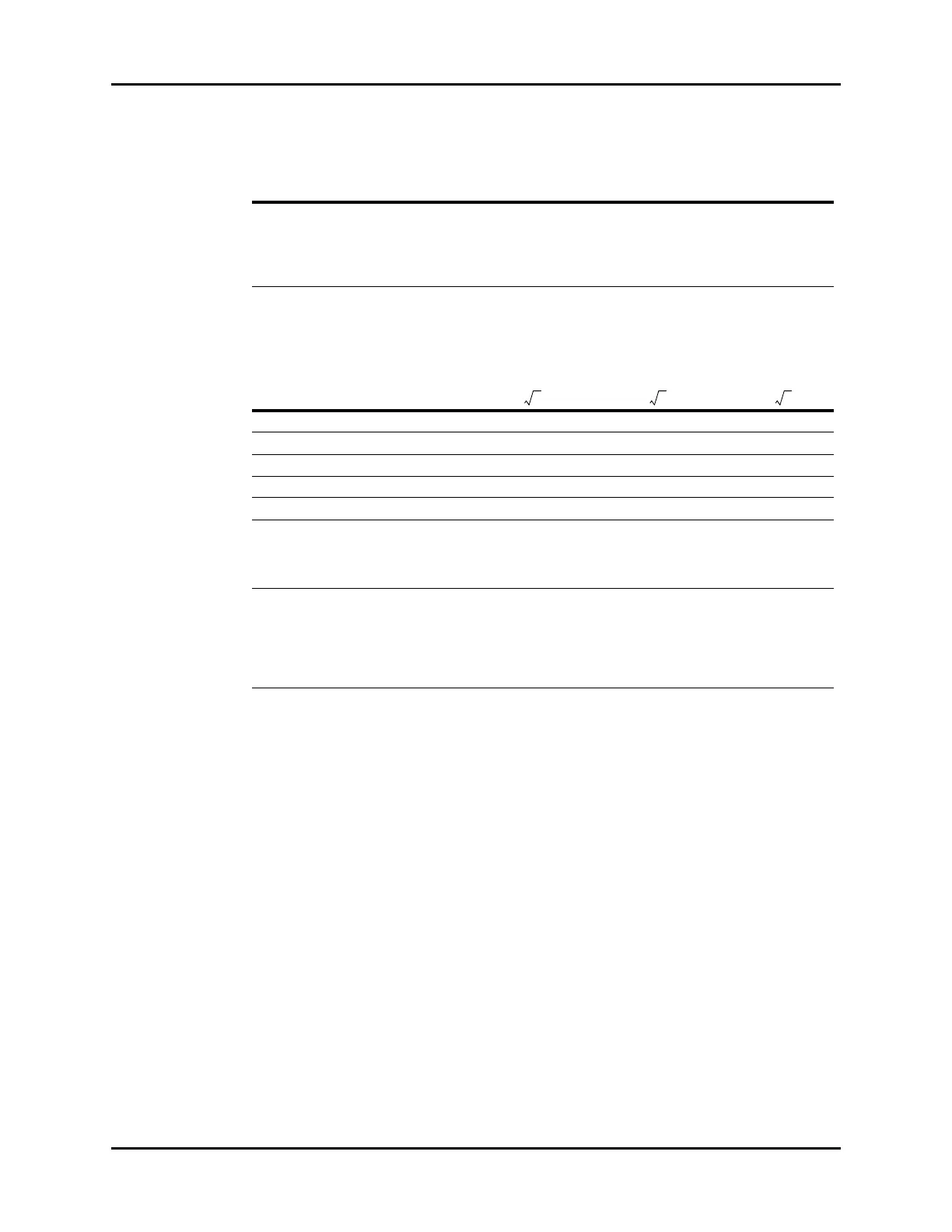Physical Specifications Appendix
6 - 26 0070-10-0666-01 Trio™ Operating Instructions
NOTE: The Trio is intended for use in the electromagnetic
environment specified below. The customer or the user of
the Trio should assure that it is used in such an environment.
The Trio meets the additional FDA electromagnetic compatibility requirements of the FDA
Reviewer Guidance for Premarket Notification Submission (November 1993) listed below:
AC Voltage Dropout: < 10 ms
NOTE: Mains power quality should be that of a typical commercial or hospital
environment. If the user of the Trio requires continued operation during
power mains interruptions, it is recommended that the Trio be powered
from an uninterruptible power supply or a battery.
AC Slow Sags and Surge: 90 V to 150 V for 500 ms
AC Steady State Voltage: 95 – 132 V, AC/battery switching below 95 V
Quasi-static Fields: 500 – 2000 V/m sweep at 0.5 Hz sine
Magnetic Emissions: MIL-STD-461D, RE101, 30 Hz to 100 kHz @ 7 cm
TABLE 6-4
RECOMMENDED SEPARATION DISTANCES BETWEEN PORTABLE AND MOBILE RF
COMMUNICATIONS EQUIPMENT AND THE TRIO
The Trio is intended for use in an electromagnetic environment in which radiated RF disturbances are
controlled. The customer or the user of the Trio can help prevent electromagnetic interference by
maintaining a minimum distance between portable and mobile RF communications equipment
(transmitters) and the Trio as recommended below, according to the maximum output power of the
communications equipment.
RATED MAXIMUM OUTPUT
POWER (P) OF TRANSMITTER
IN WATTS (W)
SEPARATION DISTANCE ACCORDING TO FREQUENCY
OF TRANSMITTER M (METERS)
150 kHz to
80 MHz
d = 1.2 x
80 MHz to
800 MHz
d = 1.2 x
800 MHz to
2.5 GHz
d = 1.2 x
0.01 0.12 0.12 0.23
0.1 0.38 0.38 0.73
1 1.2 1.2 2.3
10 3.8 3.8 7.3
100 12 12 23
For transmitters rated at a maximum output power not listed above, the recommended separation
distance d in meters (m) can be determined using the equation applicable to the frequency of the
transmitter, where P is the maximum output power rating of the transmitter in watts (W) according to the
transmitter manufacturer.
NOTE: At 80 MHz and 800 MHz, the separation distance for the
higher frequency range applies.
NOTE: These guidelines may not apply in all situations.
Electromagnetic propagation is affected by absorption and
reflection from structures, objects and people.

